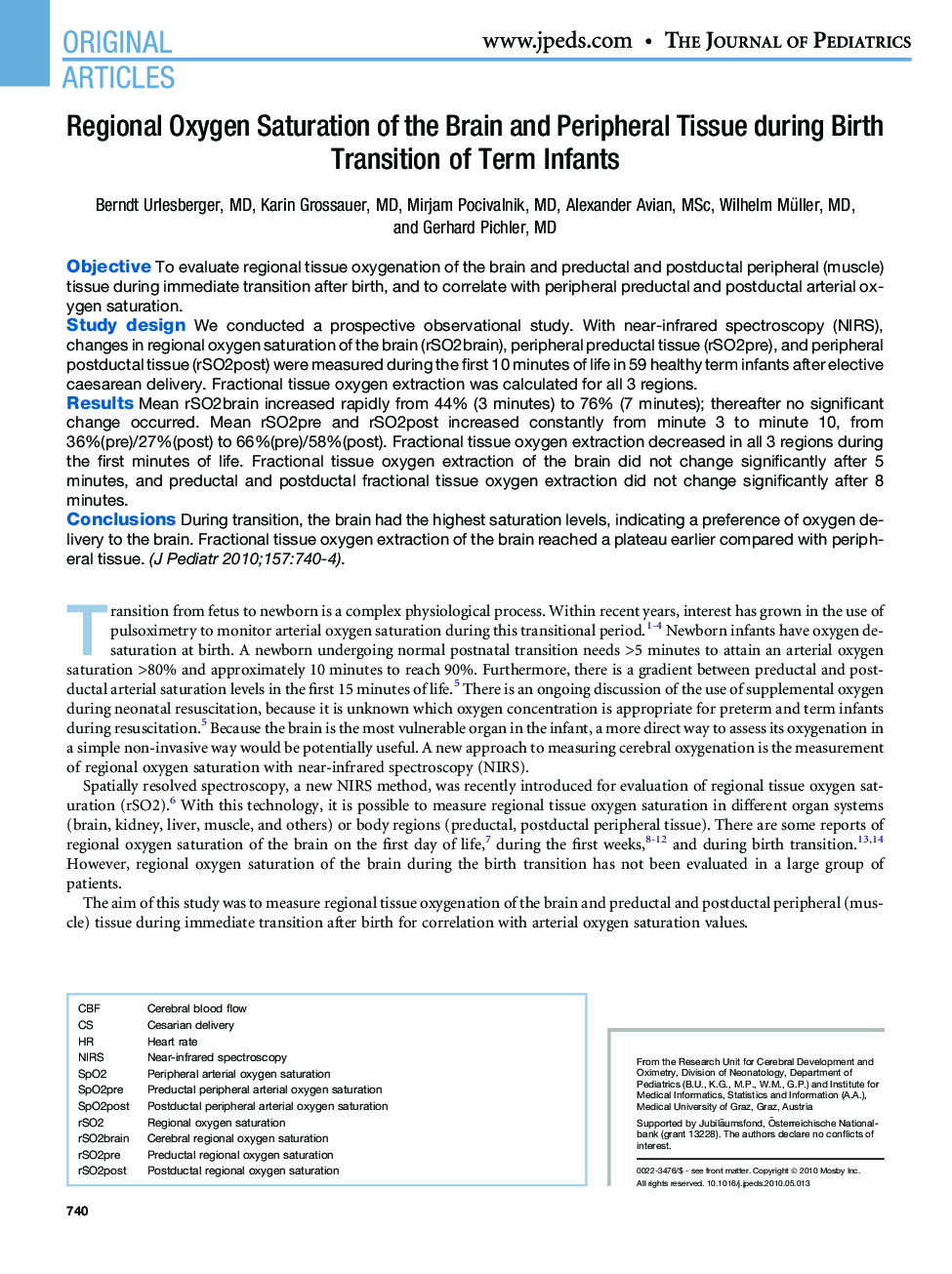| Article ID | Journal | Published Year | Pages | File Type |
|---|---|---|---|---|
| 4166279 | The Journal of Pediatrics | 2010 | 5 Pages |
ObjectiveTo evaluate regional tissue oxygenation of the brain and preductal and postductal peripheral (muscle) tissue during immediate transition after birth, and to correlate with peripheral preductal and postductal arterial oxygen saturation.Study designWe conducted a prospective observational study. With near-infrared spectroscopy (NIRS), changes in regional oxygen saturation of the brain (rSO2brain), peripheral preductal tissue (rSO2pre), and peripheral postductal tissue (rSO2post) were measured during the first 10 minutes of life in 59 healthy term infants after elective caesarean delivery. Fractional tissue oxygen extraction was calculated for all 3 regions.ResultsMean rSO2brain increased rapidly from 44% (3 minutes) to 76% (7 minutes); thereafter no significant change occurred. Mean rSO2pre and rSO2post increased constantly from minute 3 to minute 10, from 36%(pre)/27%(post) to 66%(pre)/58%(post). Fractional tissue oxygen extraction decreased in all 3 regions during the first minutes of life. Fractional tissue oxygen extraction of the brain did not change significantly after 5 minutes, and preductal and postductal fractional tissue oxygen extraction did not change significantly after 8 minutes.ConclusionsDuring transition, the brain had the highest saturation levels, indicating a preference of oxygen delivery to the brain. Fractional tissue oxygen extraction of the brain reached a plateau earlier compared with peripheral tissue.
